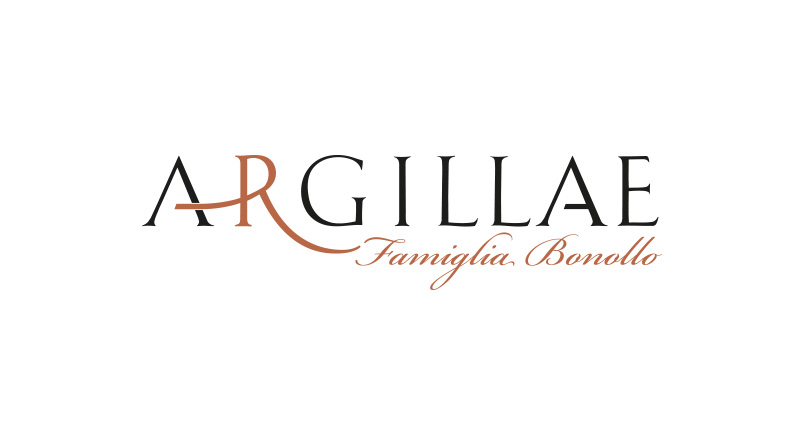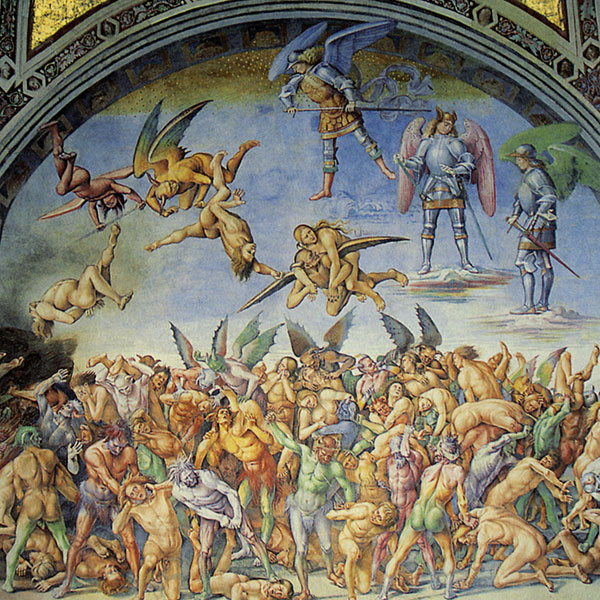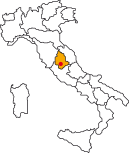ORVIETO'S WINE AND ITS ADMIRERS
The fame gained by Orvieto's wine during Etruscan times came back and spread during the Middle Ages and the Renaissance, thanks to bishops, cardinals and Popes who spent periods of time of variable length on the cliff and its surroundings. Amongst the Pontiffs, Adrian IV, Urban IV, Martin IV and Clement VII chose to stay in Orvieto to escape the hazards of Papal Rome; during the years when Orvieto was a Papal residence, several casks of wine would be sent to Rome to the tables of important personalities of the times. It was not by chance that Orvieto's wine began to be named and known as the "Popes'wine".
There are many anecdotes narrating that the quality of Orvieto's wine was always admired by well-known conoisseurs. Pope Paul III (born Farnese) preferred it to any other wine and Pope Gregory XVI decided that his own dead body should be bathed in this wine before burial. Also, may people are aware of the meaningful role played by wine in the construction of Orvieto's cathedral. The masters working in the quarry of Mount Piso between 1347 and 1349 where travertine was dug out and abraded, bought this wine in large amounts together with panatelle, so they could drink it when they worked far from Orvieto. The Opera del Duomo itself would donate it on several occasions, such as upon completion of important works on the cathedral building site. But the piece of information that most amazes us, is that wine was expressly mentioned in contracts of employment, as a medium of payment. The agreement entered into by the Opera del Duomo and painter Pinturicchio in 1496 provided that the latter be granted "sei quartenghi di grano per ogni anno... e il vino necessario" (six quartenghi of wheat per year (a quartengo weighing approximately 150 pounds) ...and the necessary wine). The agreement entered into by the Opera del Duomo and Luca Signorelli in 1500 for the realization of the frescoes of the San Brizio Chapel, provides that the Opera should grant Signorelli 12 some of wine (approximately 1,000 liters of wine) each year.
Later on, the admiration and desire for Orvieto's wine were expressed in a funny and clever way in the petition recited by Pasquino to Pope Paul V (born Borghese), on the day of the official opening of the Acqua Marcia Roman Aqueduct in the late seventeenth century:
il miracolo è fatto, o Padre Santo, (the miracle is made, Holy Father)
con l'acqua vostra che ci piace tanto; (with your water, which we like so much )
ma sarebbe il portento assai più lieto, (but such a powerful event would be even happier)
se l'acqua la cangiaste in vin d'Orvieto. (if you could change water into Orvieto's wine)
In a vibrant passage of his 1835 sonnet "Regole contro l'ubriacature"(rules to avoid getting drunk), Giuseppe Gioacchino Belli, underlined how "Orvieto's white" was considered "a wine for great events" for its prominent qualities as opposed to common wines and was destined exclusively to the tables of the rich and powerful people who could afford to pay a high price for it.
Looking at even more recent evidence, it is known that Orvieto's wine was used by Garibaldi and the Thousand, before leaving Talamone's port, to toast to the Sicilian adventure. A valiant Tuscan officer by the name of Giuseppe Bandi, personal secretary to General Garibaldi, so narrates: "La mia comparsa fu salutata con un grido dagli amici e da quell'ottimo uomo del Generale (Garibaldi). (my appearance was greeted by friends and by that great man that is the General, with a cheer) Mi fé cenno di avvicinarmi a lui e porgendomi un bicchiere colmo di vino d'Orvieto mi disse: (he beckoned me to go closer to him, handed me a glassful of Orvieto's wine, and said): bevete anche voi alla buona fortuna d'Italia (you too drink to the good luck of Italy)".
Also the Orvietani pride themselves of the fact that Sigmund Freud wrote a postcard to his wife Martha when visiting Orvieto in 1897, telling her about the Duomo and the wine, which he defined as "famous" and "similar to Port": this combination of qualities may sound curious, nevertheless it points out what was the main characteristic of the Orvieto wine of old times, that is the fact that it was a sweet wine reputed similar to the passito wine considered the best by far, that is the French Sauternes.
The fame gained by Orvieto's wine during Etruscan times came back and spread during the Middle Ages and the Renaissance, thanks to bishops, cardinals and Popes who spent periods of time of variable length on the cliff and its surroundings. Amongst the Pontiffs, Adrian IV, Urban IV, Martin IV and Clement VII chose to stay in Orvieto to escape the hazards of Papal Rome; during the years when Orvieto was a Papal residence, several casks of wine would be sent to Rome to the tables of important personalities of the times. It was not by chance that Orvieto's wine began to be named and known as the "Popes'wine".
There are many anecdotes narrating that the quality of Orvieto's wine was always admired by well-known conoisseurs. Pope Paul III (born Farnese) preferred it to any other wine and Pope Gregory XVI decided that his own dead body should be bathed in this wine before burial. Also, may people are aware of the meaningful role played by wine in the construction of Orvieto's cathedral. The masters working in the quarry of Mount Piso between 1347 and 1349 where travertine was dug out and abraded, bought this wine in large amounts together with panatelle, so they could drink it when they worked far from Orvieto. The Opera del Duomo itself would donate it on several occasions, such as upon completion of important works on the cathedral building site. But the piece of information that most amazes us, is that wine was expressly mentioned in contracts of employment, as a medium of payment. The agreement entered into by the Opera del Duomo and painter Pinturicchio in 1496 provided that the latter be granted "sei quartenghi di grano per ogni anno... e il vino necessario" (six quartenghi of wheat per year (a quartengo weighing approximately 150 pounds) ...and the necessary wine). The agreement entered into by the Opera del Duomo and Luca Signorelli in 1500 for the realization of the frescoes of the San Brizio Chapel, provides that the Opera should grant Signorelli 12 some of wine (approximately 1,000 liters of wine) each year.
Later on, the admiration and desire for Orvieto's wine were expressed in a funny and clever way in the petition recited by Pasquino to Pope Paul V (born Borghese), on the day of the official opening of the Acqua Marcia Roman Aqueduct in the late seventeenth century:
il miracolo è fatto, o Padre Santo, (the miracle is made, Holy Father)
con l'acqua vostra che ci piace tanto; (with your water, which we like so much )
ma sarebbe il portento assai più lieto, (but such a powerful event would be even happier)
se l'acqua la cangiaste in vin d'Orvieto. (if you could change water into Orvieto's wine)
In a vibrant passage of his 1835 sonnet "Regole contro l'ubriacature"(rules to avoid getting drunk), Giuseppe Gioacchino Belli, underlined how "Orvieto's white" was considered "a wine for great events" for its prominent qualities as opposed to common wines and was destined exclusively to the tables of the rich and powerful people who could afford to pay a high price for it.
Looking at even more recent evidence, it is known that Orvieto's wine was used by Garibaldi and the Thousand, before leaving Talamone's port, to toast to the Sicilian adventure. A valiant Tuscan officer by the name of Giuseppe Bandi, personal secretary to General Garibaldi, so narrates: "La mia comparsa fu salutata con un grido dagli amici e da quell'ottimo uomo del Generale (Garibaldi). (my appearance was greeted by friends and by that great man that is the General, with a cheer) Mi fé cenno di avvicinarmi a lui e porgendomi un bicchiere colmo di vino d'Orvieto mi disse: (he beckoned me to go closer to him, handed me a glassful of Orvieto's wine, and said): bevete anche voi alla buona fortuna d'Italia (you too drink to the good luck of Italy)".
Also the Orvietani pride themselves of the fact that Sigmund Freud wrote a postcard to his wife Martha when visiting Orvieto in 1897, telling her about the Duomo and the wine, which he defined as "famous" and "similar to Port": this combination of qualities may sound curious, nevertheless it points out what was the main characteristic of the Orvieto wine of old times, that is the fact that it was a sweet wine reputed similar to the passito wine considered the best by far, that is the French Sauternes.





